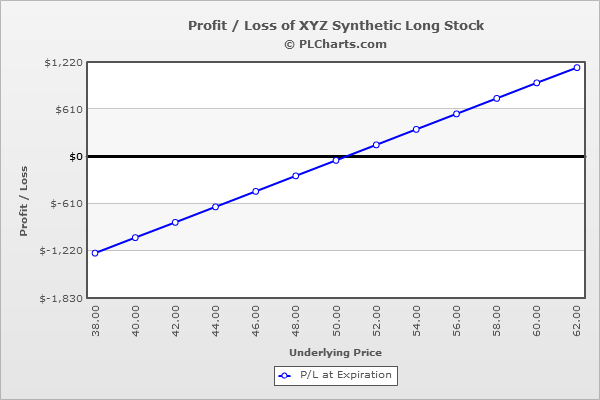Synthetic Long Stock

Risk: limited but very big
Reward: limited
General Description
Entering a synthetic long stock entails buying calls and selling an equal number of puts at the same strike (same expiration month).
(draw a synthetic long stock risk diagram here)
The Thinking
You're bullish and are confident a stock will move up. Instead of buying the stock outright, which is expensive, you replicate the gain/loss you would experience if you were long the stock for a fraction of the cost.
Example
XYZ is at $50. Instead of buying the stock, you buy (1) 50 call for $4.00 and sell (1) 50 put for $3.50. Your net debit it initiate the trade is $0.50.
If the stock moves up to $60 at expiration, the 50 call will be worth $10 (netting you a profit of $6.00), and the puts will be worthless (netting you a profit of $3.50). Your total profit is $9.50 (because of the different in premium between the call and put, your profit isn't $10.00).
If the stock moves down to $40, the 50 call will be worthless (netting you a loss of $4.00), and the 50 put will be worth $10.00 (netting you a loss of $6.50). The total loss is $10.50 (again because of the difference in premiums when the trade was initiated).
So this trade pretty closely mimics what it'd be like if you just bought the stock outright, but it’s not perfect.
The PL chart below graphically shows where this trade will be profitable and at a loss.

|

